
2. Victorian and Edwardian drill lesson
Authentic lesson plan taught by Miss Constance M. Domleo,
from the 1909 school syllabus
What was the drill lesson?
Drill was the Victorian term for physical exercise (PE). It involved a series of formal exercises such as marching on the spot, arm swinging, trunk bending, skipping, etc. It was thought to help children follow instructions, improve coordination and health, and prepare them for work and military service. The lesson was led by the class teacher.
The Syllabus of Physical Exercises for Public Elementary Schools
The Syllabus of Physical Exercises for Public Elementary Schools was published in 1909 and is described in the preface as a 'new and revised edition'. Building on earlier works of the late Victorian era, it had a print-run of 80,000 hardback copies, priced at 9d (ninepence) each, for purchase by schools and individual teachers.

Miss Domleo's drill lesson
The copy of the syllabus in my possession belonged to Miss Constance Mary Domleo (born 1882, Normanton On Soar, Nottinghamshire). At the time she bought the syllabus in December 1909, she was 27-years-old and was teaching at a London school. Both front and back endpapers are covered in her notes. The front endpapers
 record a long list of 'infectious diseases notifiable by the Public Health Act' (typhoid, cholera, smallpox, and many others). The rear endpapers record a 20-minute drill lesson she gave to her class.
record a long list of 'infectious diseases notifiable by the Public Health Act' (typhoid, cholera, smallpox, and many others). The rear endpapers record a 20-minute drill lesson she gave to her class.
Method of giving the lesson
"In order to obtain the best results from a lesson in Physical Training it should be rendered as enjoyable and interesting as possible to the children. This will depend partly on the selection of exercises, but also, to a very great extent, on the personality and methods of the teacher. Impatience on the one hand, and hesitation on the other, should be avoided, and, while cheerfulness is greatly to be desired, the manner should be firm and decided in order that discipline may be maintained." (Syllabus, p21; Miss Domleo's underscores retained)
The lesson
• The drill lesson is conducted by the teacher in three parts, detailed below.
• Each exercise is to be repeated a number of times until the teacher is satisfied with the performance of the children.
• At the end of each exercise, the teacher gives the command "Attention!", "Stand easy" or "Hips – firm", returning the children to one of the preliminary positions in readiness for the next exercise.

1. Form ranks
2. Preliminary orders
Attention
Stand easy
Hips – firm
3. Exercises
Breathing exercises
Head exercises
Feet exercises
Lunge exercises
Trunk bending exercises
Arm bending and stretching exercises
Balance exercises
Arm swinging exercises
Hopping exercises
Click on image to enlarge it and view in the correct proportion. Click on enlarged image to scroll through slideshow.
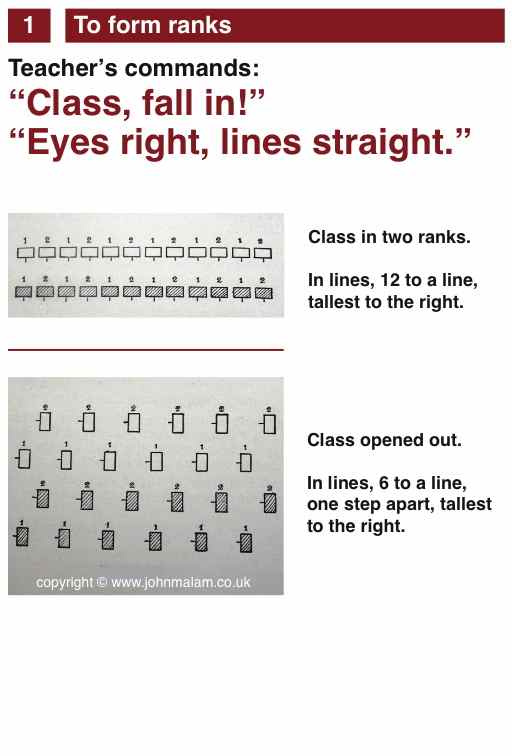
|
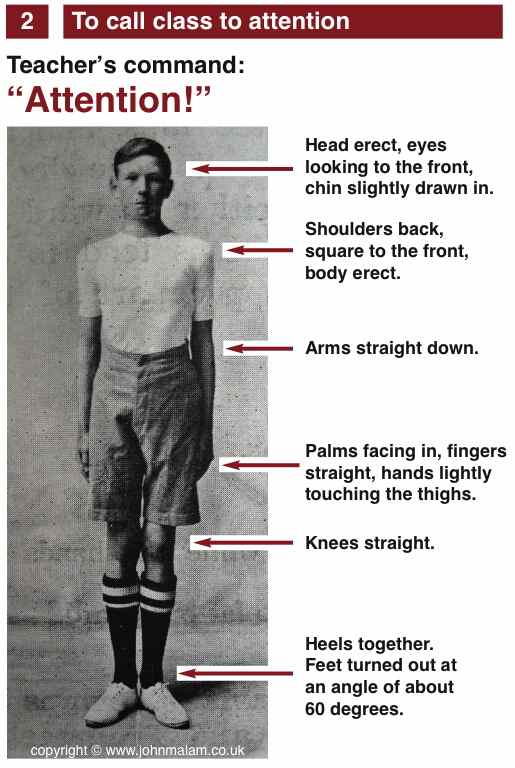 |
 |
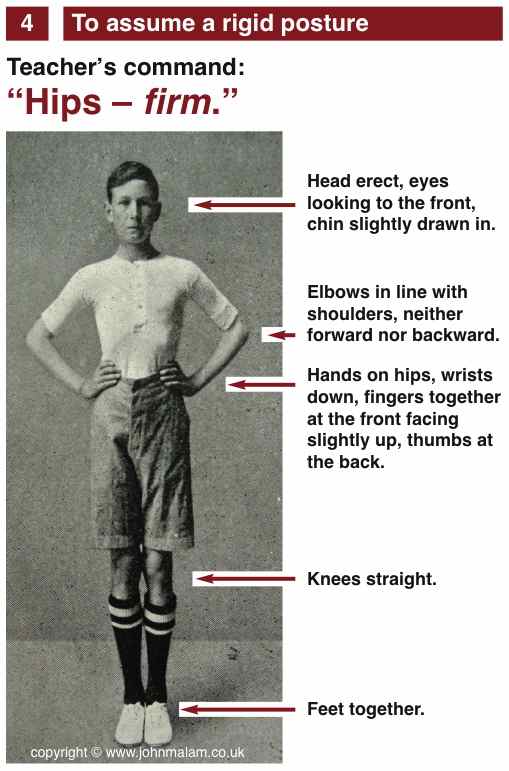 |
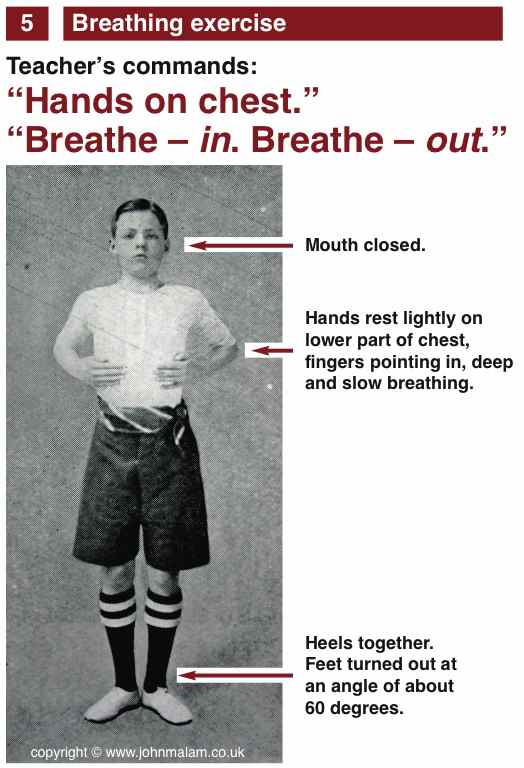 |
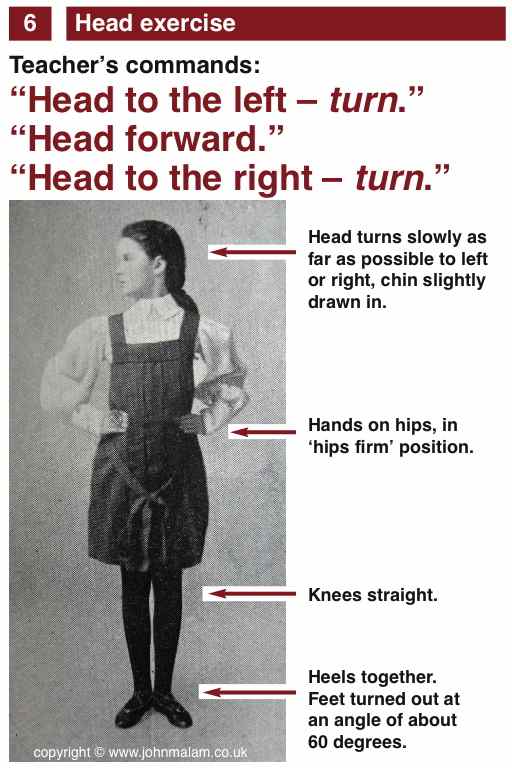 |
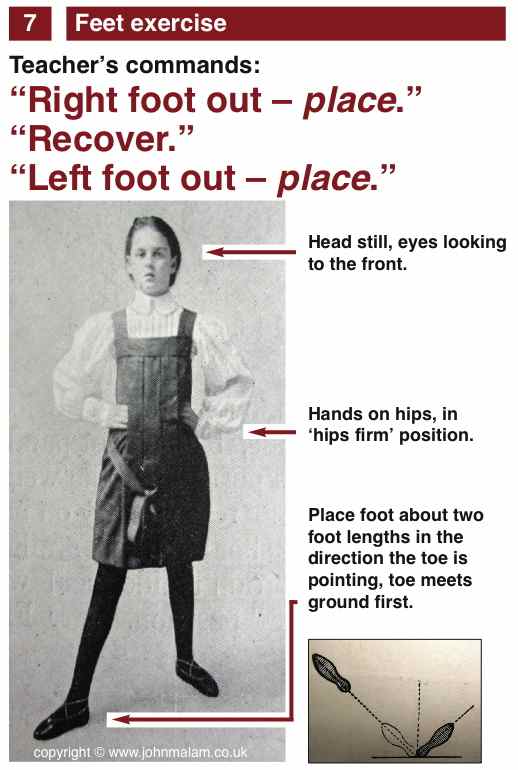 |
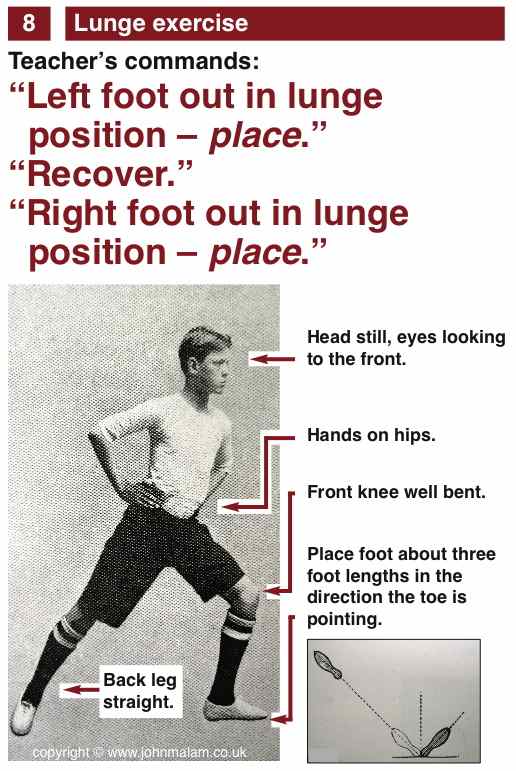 |
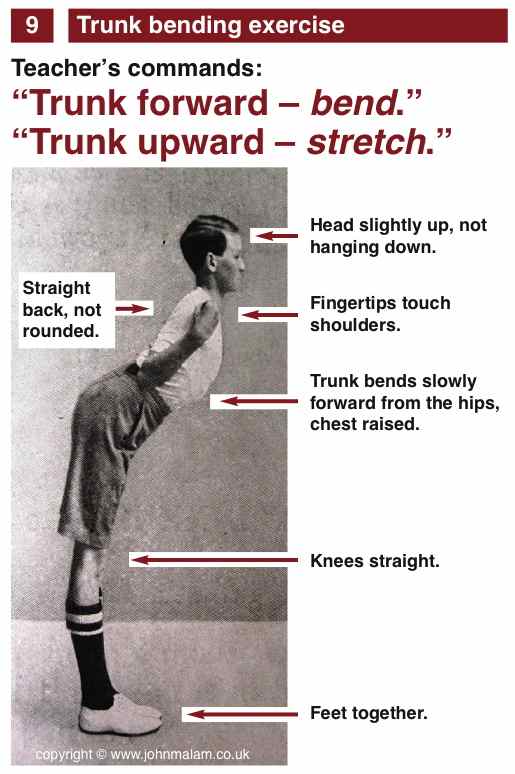 |
 |
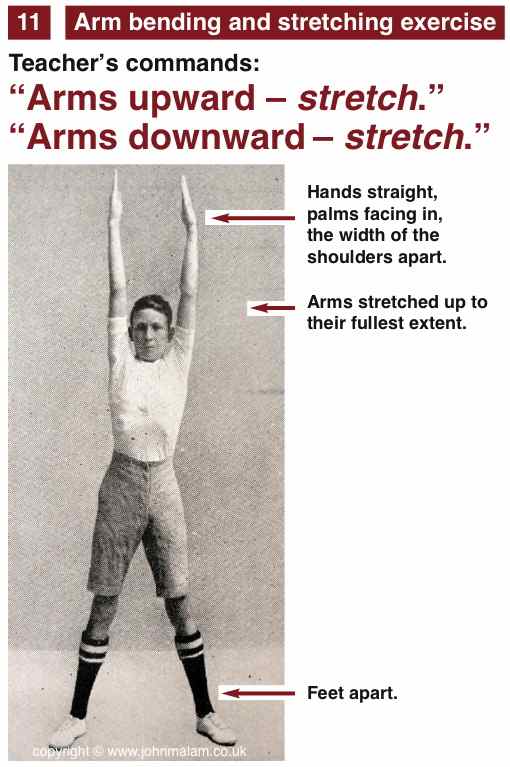 |
 |
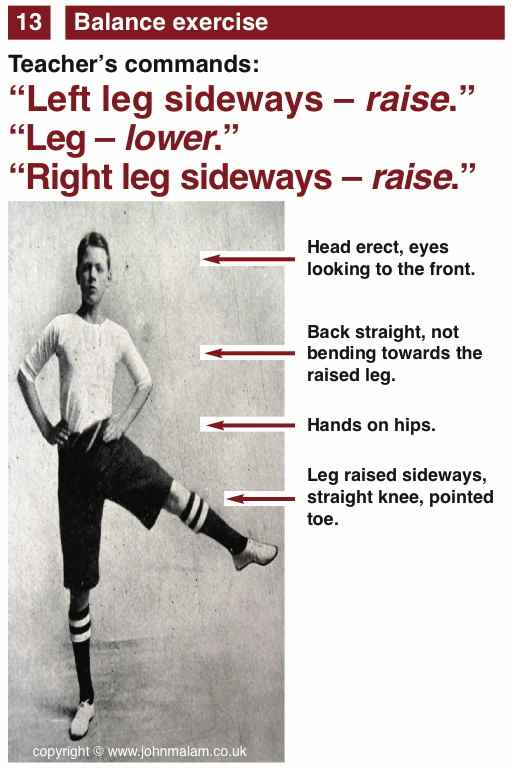 |
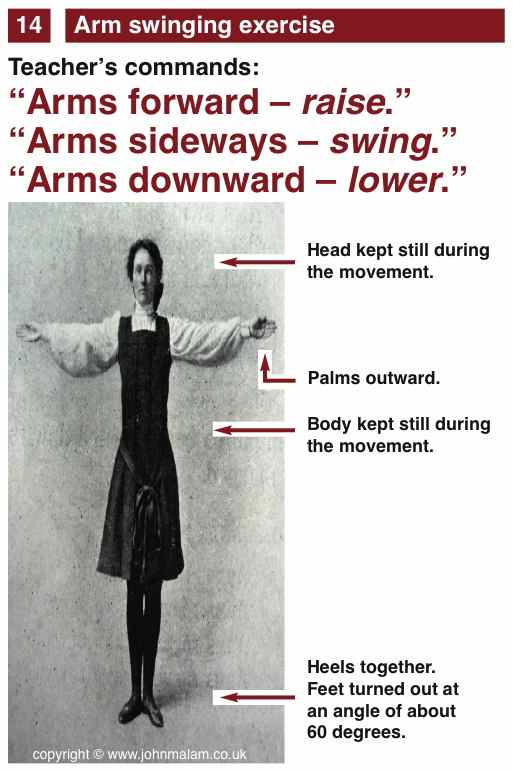 |
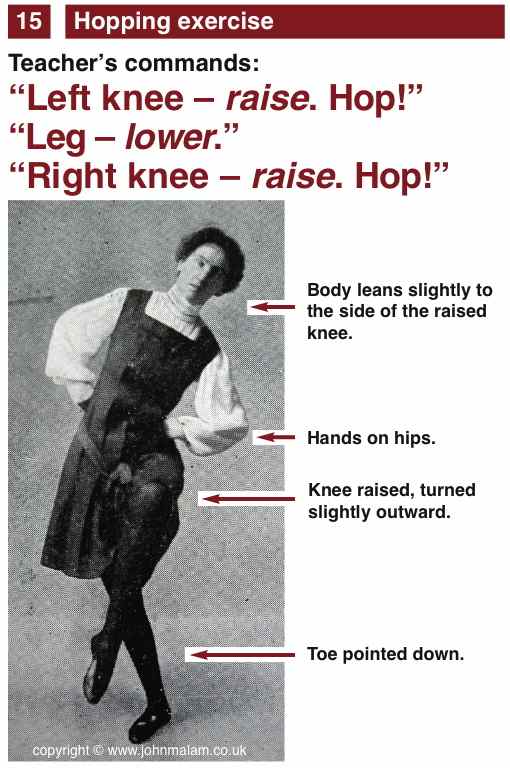 |








